Put your prejudices about American movies aside because...
Cheerleading is a sport
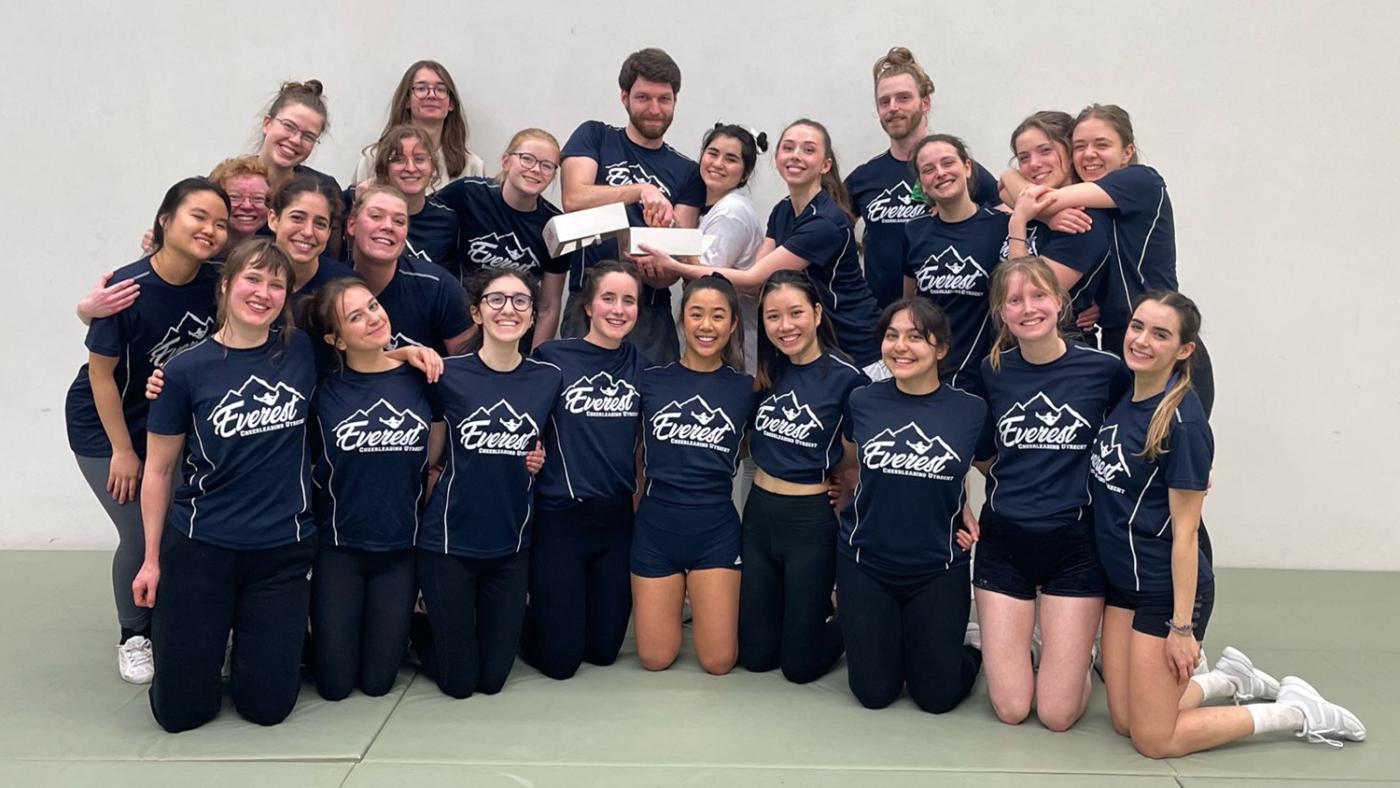
It takes a while to find the cheerleaders of Team Everest at the large sports complex on Uppsalalaan. The squash court reserved for "cheer" – as the athletes themselves abbreviate the sport – is tucked away between spaces where others are playing volleyball, handball and badminton. It is not a big court, though, considering 23 people will be training there soon.
There is chatter, faces look happy, and everyone is wearing the same uniform. Women are clearly in the majority: only three men are present, although cheerleading was first originally a male domain in the United States.
Once the floor is covered with judo mats, it is time for the day's first exercise. They are practising for a show that will include a lot of stunts. Today, they will practise one in which a cheerleader will be lifted into the air.
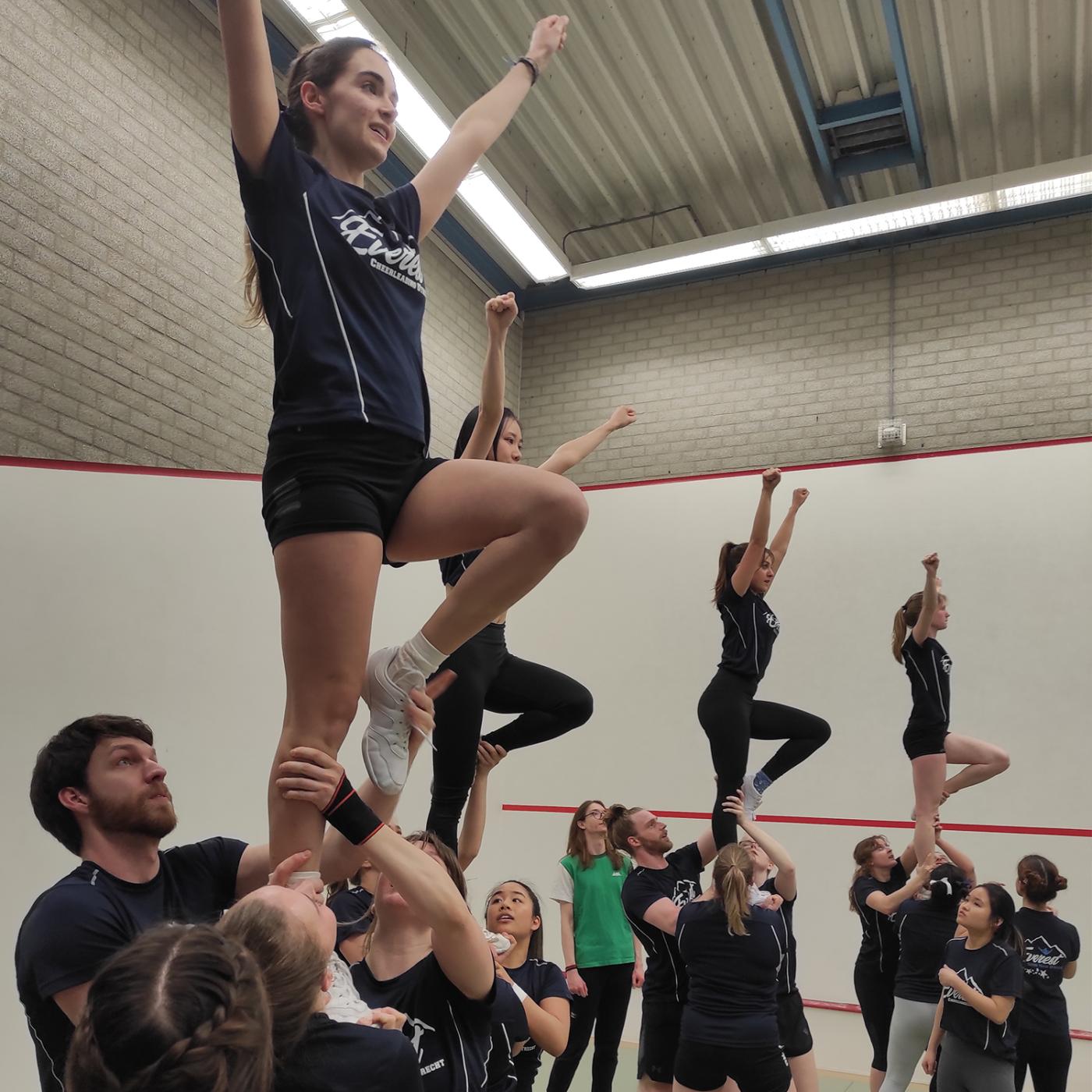
Everest practising stunts. Photo: Koen van den Helder
Weightlifting
The stunts are performed in four groups of four, divided into three main positions: two "bases", a "backspot" (whose members stay on the ground), and a "flyer", who stands on top of the bases.
Physics student Gabriela is a base. She is responsible for lifting and holding the flyer. “It's like lifting weights, only with people,” she jokes. Marije, who just obtained her diploma in Sustainable Development, is a flyer. “It helps that I used to do gymnastics,” she says about her task. She must keep her balance on the platform built by the bases and the backspot.
The backspot provides safety and balance for the flyer. They're also tasked with catching the flyer if they fall, which is why the strongest person in the group usually gets this position. Who gets to be the flyer and who gets to be the base? "Tha depends on their weight", Gabriela and Marije shout in unison. “When you're a base, sometimes you forget how hard it is to be a flyer,” says Gabriela. It is easy to see that being a base is tough, even for a layman.
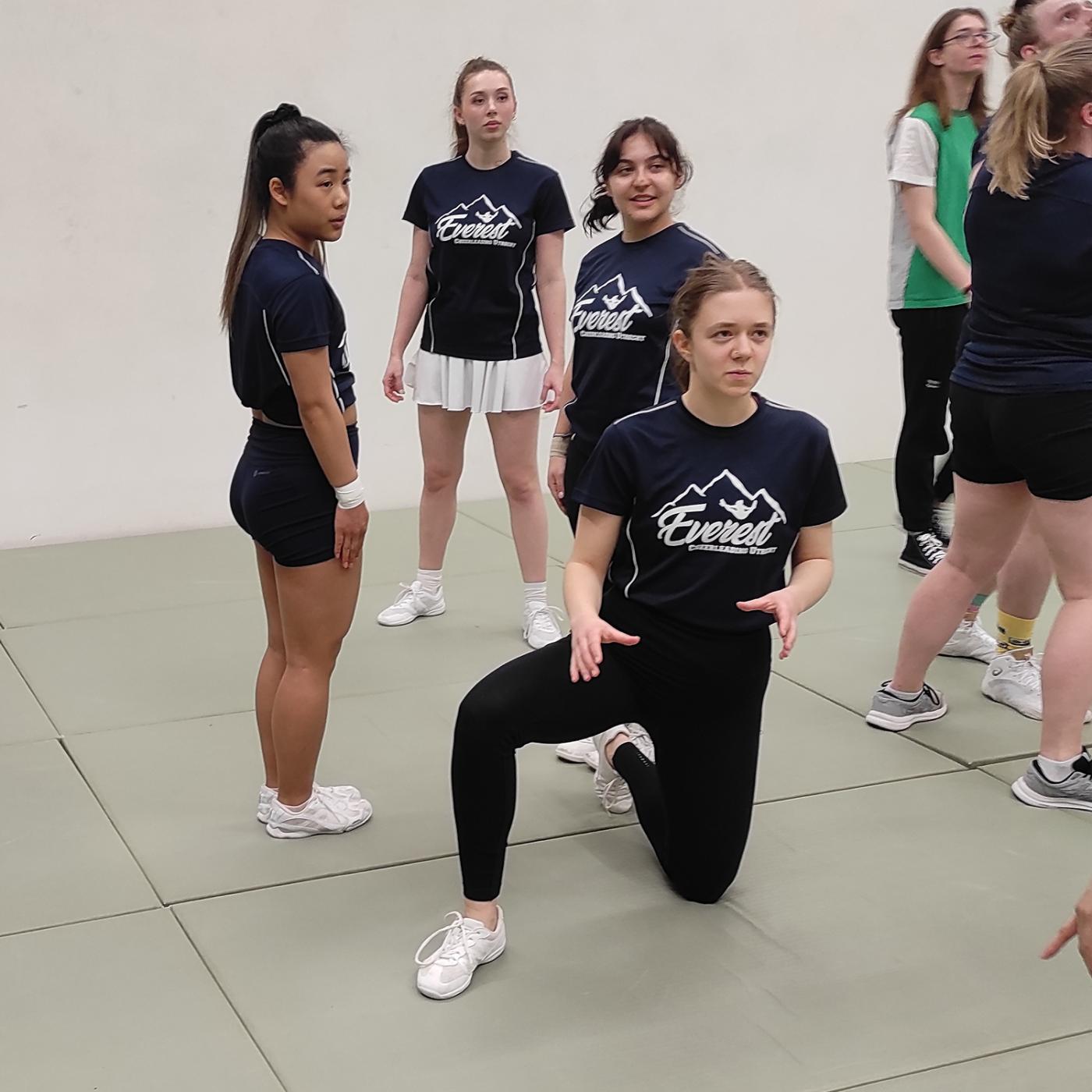
Gabriela, the base. Photo: Koen van den Helder
Practice, practice and then practice again
Coach Ariel Yew explains that, first, the group practices the stunt "dryly", that is: without anyone actually going into the air. They count out loud in eight bars and perform the moves at specific beats. They must be incredibly coordinated: everyone should know who does what and when.
After the walkthrough, it's time for the real deal. Once again, they count out loud and the cheerleaders stand in formation: three people in the base and a fourth lifted into the air, who will perform various moves that resemble those of a gymnast on a balance beam. The exercise ends with a somersault where she is caught by the bottom three. It is a demanding exercise for everyone, regardless of their position, so much so they need to take a breather once they are done. However, they are far from finished, as today's training session will last two hours.
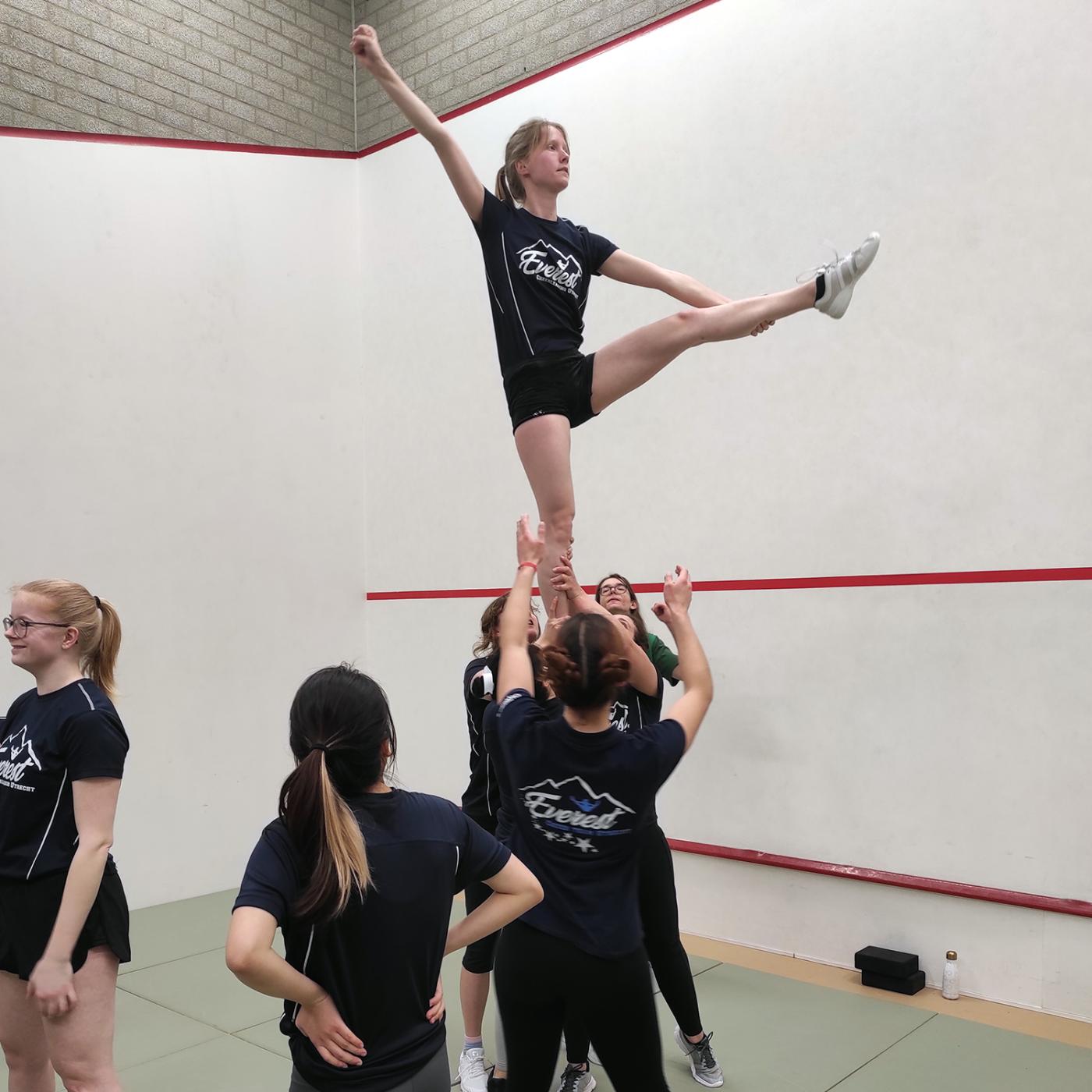
Marije, the flyer, in the middle of a stunt. Photo: Koen van den Helder
Creatively
In between exercises, base Gabriela tells why she chose this sport. “I was looking for a sport that would make me push my body's limits. Cheer allows you to do that creatively, building your self-confidence at the same time.” She also enjoys showing the results to others when they perform.
“I used to do gymnastics,” says Marije, “and I was looking for a sport where I could do that as a team. Ultimately, the group is the reason I want to stay here.”
“It is not surprising that the group is so close,” Gabriela continues, “you really have to trust each other,” referring to the stunt elements that often happen high in the air. “It forms an automatic bond.”
They also meet each other outside the court often. “We watch movies together and we went to a trampoline park the other day,” says Marije.
The cohesion of the group is visible at the end of the training session when one of the men gets a birthday cake decorated with pictures of him.
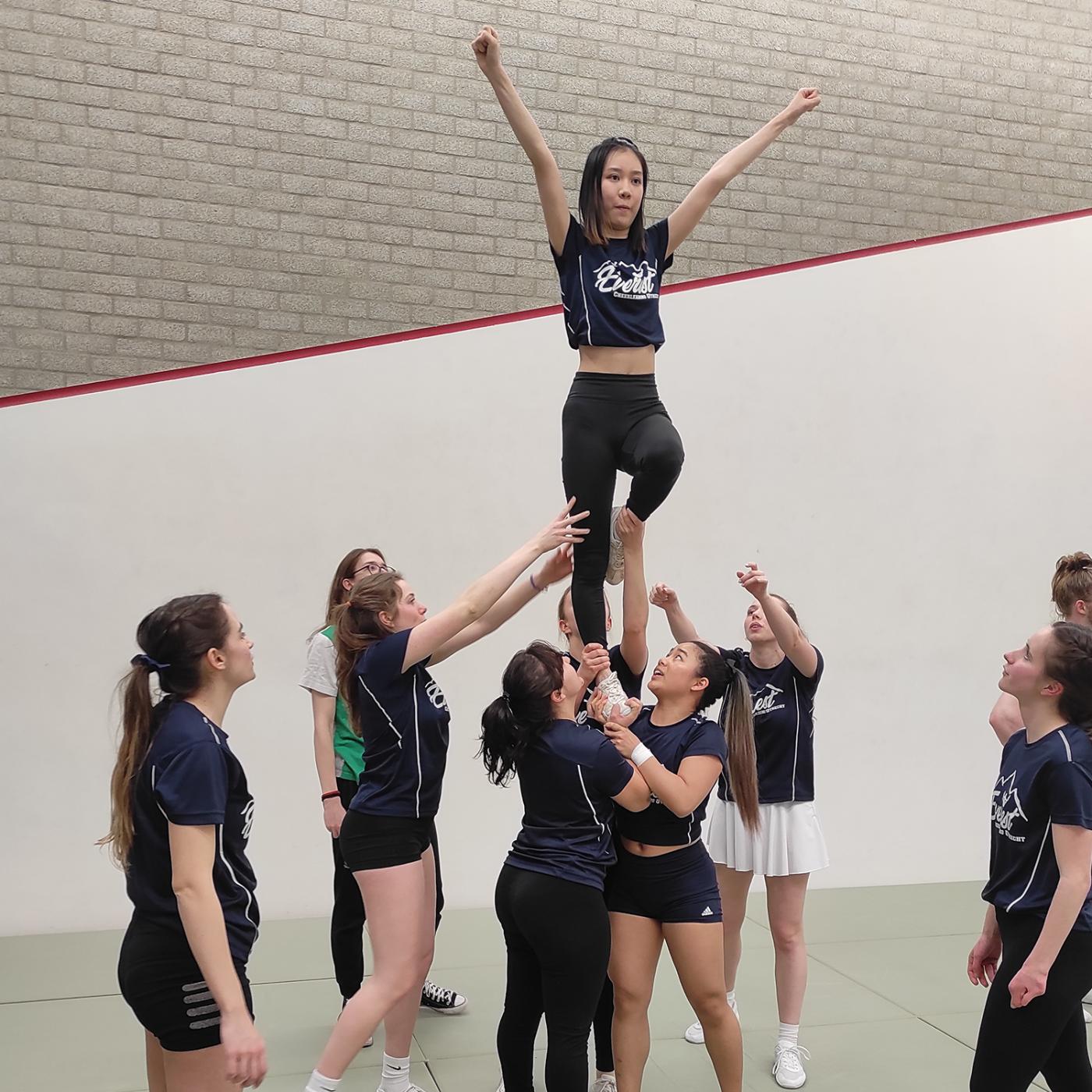
Coach Ariel Yew. Photo: Koen van den Helder
Own initiative
The cheerleading course has been running at Olympos for a year and a half. It was Coach Yew's initiative. She is part of the Dutch national team, which she will represent at the world championship in Florida at the end of April. She is a flyer, the same role she holds with Team Everest.
“I used to cheer when I lived in Malaysia, so I wanted to join a team in the Netherlands too.” However, she soon realised that the sport is not as popular here as it is Malaysia and other countries. That's why she started a team at UCU when she was a student there. After her graduation, she proposed a course to Olympos and they were soon on board.
Yew's initiative has grown into a club of about 25 people who train three times a week. Anyone with an Olympos pass can register, as long as they do it in the first two of four blocks. The two final blocks are reserved for a select group of people who already manage the base.
“We want to have a permanent group in the second part of the year,” says Yew. “We work together on routines that allow us to perform shows and join competitions.” They have already performed with the volleyball club Protos and the USBF basketball team.
Future dreams
“I hope cheerleading will become more and more popular as a sport,” says Gabriela when we talk about Everest's future. An increase in popularity would perhaps lead to a change in image. “People's idea of cheerleading comes from American movies,” says Marije, “but we are not just waving pompoms.” If the image of the sport changes, more people might be interested in practising it, including more men. “Although we don't need men in the team,” Yew observes.
Cheerleading has been fighting for more international recognition for years. Athletes would like cheerleading to be included in the Olympic Games and there is a real chance that this will happen in 2028. If that happens, Yew thinks that the Dutch national team could be there.
Yew also hopes that cheerleading will have more space at Olympos, with an official cheerleading mat instead of a judo one. Sometimes, their Saturday trainings are done in one of the halls, where there is more space between all the competitions, and she appreciates that. Unfortunately, the squash court “does not allow us to get everything out of our sport,” explains Marije.